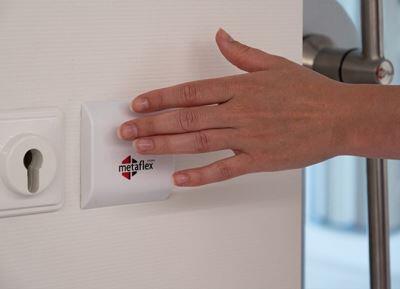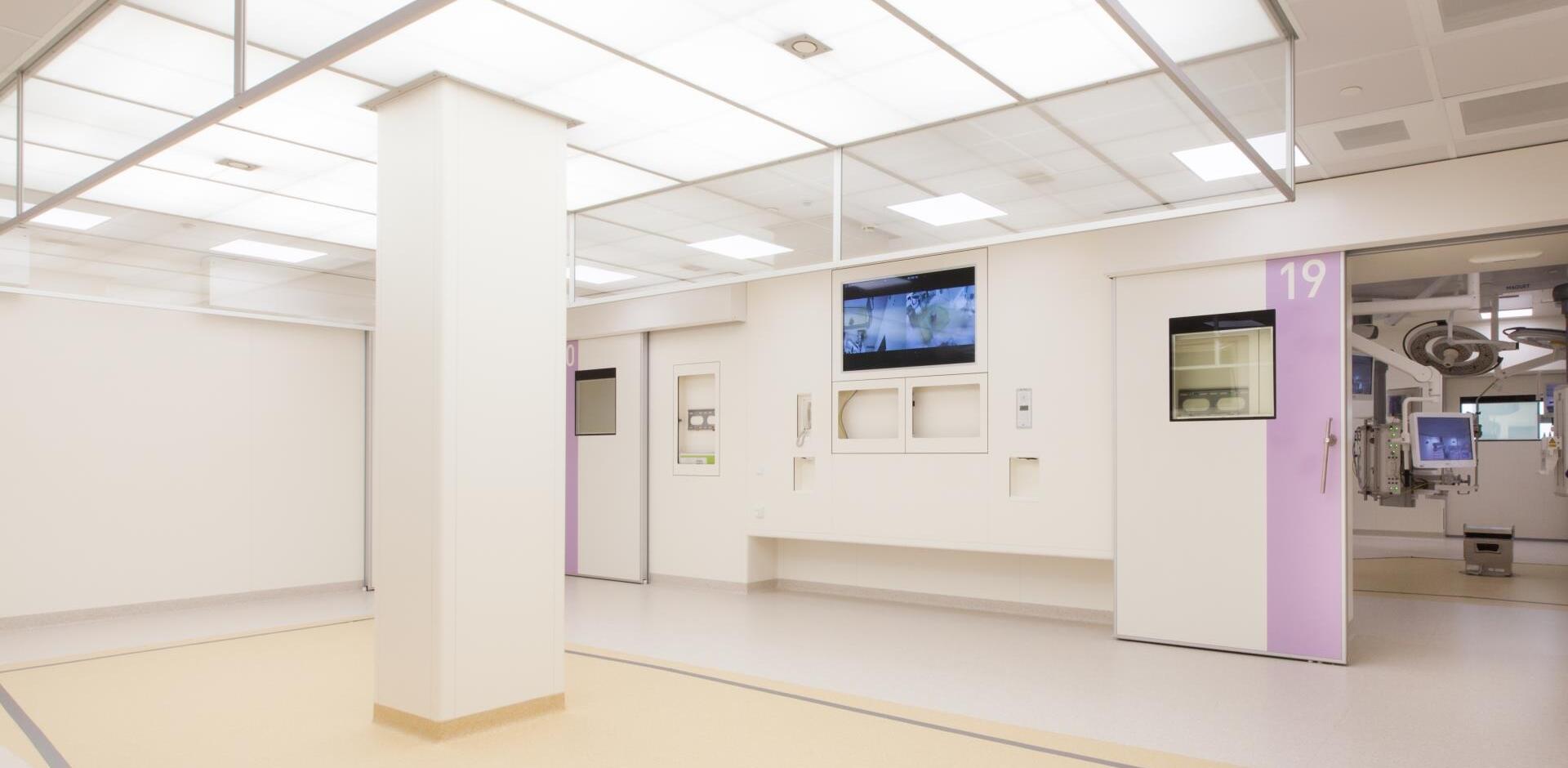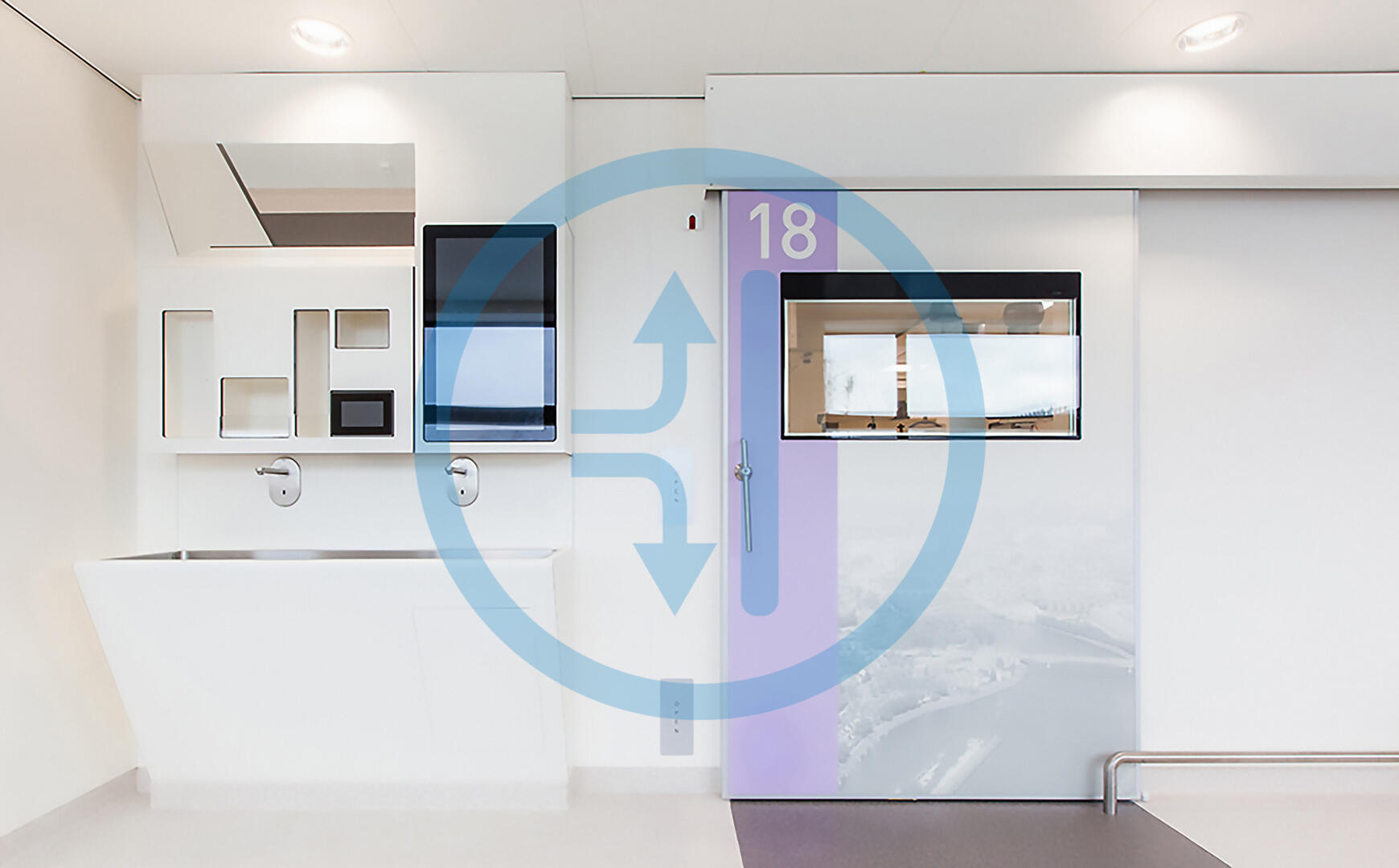
”A wonderful challenge to market the high-quality doors of Metaflex.”
17 April 2024
The design of hospitals and nursing homes has a huge effect on safety within healthcare facilities and the prevention of the spread of viruses. This has been demonstrated once again during the current COVID-19 crisis. Metaflex studies such topics very closely because we develop medical door systems and serve as a partner in the construction and design of healthcare facilities. The 20 questions and answers below are important for all healthcare facilities and all architects of healthcare facilities.
On 26 January 2021, HKS Architects collaborated, with engineering firm Arup to publish an article and a knowledge document about how the design and architecture of hospitals and other healthcare facilities can help them to anticipate a pandemic so that they can continue to function safely. Each space requires specific conditions, with doors and other thoroughfares playing a key role.
Metaflex believes it is very important to guarantee patient safety so that patients, visitors and healthcare staff can be effectively protected against communicable diseases. That is why we want to share our knowledge with you. The questions and answers below are taken from HKS Architects’ article and knowledge document and from our own white paper about the role of doors in the spread of pathogens.

‘We must prepare for a future with more outbreaks of infectious diseases,’ says epidemiologist and virologist Marion Koopmans, head of the Virology Department at the Erasmus Medical Center.
For decades, experts have been warning us that more and more infections are jumping from animals to humans (zoonosis) because of the way in which we have decided to live, which includes ever increasing pressure from worldwide trade, passenger traffic, land use, our natural world and climate change.
Source: Utrecht University
‘Preparation for new infectious diseases should in fact be structural, also in healthcare,’ according to epidemiologist and virologist Marion Koopmans. ‘During the Ebola outbreak in Western Africa, all hospitals had to suddenly practise protective measures when approaching patients who had a fever. You should not only start thinking about such things when there is an outbreak. Preparation for outbreaks must become a lot more structural.’
Source: Utrecht University
The healthcare environment must be seen as being part of the solution when containing pandemics. It is essential to create facilities that can continue to function during a pandemic. This must be taken into account when designing new, and adapting and renovating existing, healthcare spaces and buildings. Flexibility plays an essential role in the design.
Source: HKS report.
HKS pays specific attention to flexibility, safety and cleanliness, and human well-being.
Flexibility
In the future, multifunctional or flexible spaces will be essential in healthcare facilities. For instance, pop-up temporary walls or space dividers made of, for example, Plexiglas.
Patient safety and cleanliness
Attention must be paid to creating a short, direct route from the Accident and Emergency Department (A&E). Furthermore, at facility level, ventilation, power supply and sanitary facilities must be considered as part of every solution in order to improve infection prevention.
For more information, please refer to the 2020 ER Contagion report by HKS.
Human well-being
Healthcare during a pandemic can be extremely stressful for staff, patients and families. Attention must be paid to this when designing hospital interiors, e.g. by assigning specific units for rest, recovery and well-being.
Source: HKS report.
Source: HKS report.
Source: HKS report.
In various ways. For instance, via shared use of equipment, mixed visitor and patient flows, door handles (Wojgani, Kehsa, Cloutman-Green, Gray, Gant & Klein, 2011) and airflow, caused by opening and closing doors that provide access to, for example, isolation rooms or operating theatres (Ham, 1999; Kalliomäki, Saarinen, Tang & Koksela, 2015; Mouvasi & Grosskopf, 2016).
Studies showed that factors like the speed of door movements, how long doors are open, door use by healthcare providers and climate control are all factors that affect the level of airflow between different spaces (Ham, 1999; Mouvasi & Grosskopf, 2016; Tang et al., 2013).
Questions 7 to 16 have been answered using the Metaflex white paper about the role of doors in containing infection hazards in hospitals. Further explanations can be found in this knowledge document.

At first glance, airflow does not appear to present any risks; however, there could be a direct risk if this air contains droplets contaminated with pathogens. This certainly applies when doors between isolated spaces and adjacent spaces are open (Kiel & Wilson, 1989; Eames, Shoaib, Klettner & Taban, 2009). For instance, droplets exhaled by patients can be released into the air and create a pathway between infected persons and susceptible persons (Mousavi & Grosskopf, 2016). This transmission route can spread certain communicable diseases, such as COVID-19 (Mousavi & Grosskopf, 2016).
Although airflows can be controlled via temperature and pressure differences, these control methods insufficient in their own right. Besides climate control, the use of doors plays a significant role when controlling airflow between different spaces.
Even a small temperature difference can be responsible for a major increase in airflow through openings in dividing walls (Kalliomäki et al., 2015). In addition, excess temperature differences can even change the direction of the airflow, which is problematic when negative pressure is used to limit airflows from, for example, an isolation room. This means the warmer, contaminated air from the isolation room can leave the room at head height and end up in the face of healthcare providers (Tang et al., 2005).
Tang et al (2013) showed that sliding doors create less airflow than hinged doors when opened. A different study also showed that hinged doors cause more airflow (Kalliomäki et al., 2015). Moreover, Kalliomäki et al (2015) showed that double hinged doors cause the most airflow and that single sliding doors cause the least airflow (Tang et al., 2013). However, single sliding doors take up relatively more space, which is not always available. Climate control can be effective as a supplementary measure.
Higher opening and closing speed has a negative effect on the number of transferred particles (Ham, 1999). The study by Tang et al (2013) showed that hinged doors have higher opening and closing speeds. This means that they are able to transfer more contaminated air particles than sliding doors. Studies have shown that, in the absence of ventilation, there is only modest airflow when sliding doors are opened. In contrast, hinged doors cause high airflow when opened, and this reaches far into the room (Kalliomäki et al, 2015). The longer the door is open, the more air is exchanged between the two spaces, leading to an increased risk of infection.
When creating negative pressure in isolation rooms, a ventilation system is used to extract more air from the isolation room than from the surrounding spaces. As a result, when the door opens, air will be automatically drawn into the isolation room instead of being blowing out of the room, thus preventing airborne infectious diseases from spreading (Adams, Johnson & Lynch, 2011).
No, because using the door creates airflow, even with negative pressure. Moreover, if there is insufficient negative pressure, this can even have the opposite effect (Mousavi & Grosskopf, 2016; Tang, Eames, Li, Taha, Wilson, Bellingan, Ward & Breuer, 2005). Furthermore, opening a door too quickly, as with hinged doors, can lead to an effect that is opposite to the effect of negative pressure, and thus lead to more airflow (Mousavi & Grosskopf, 2016; Tang et al., 2005). The direction in which a hinged door opens also appears to have an impact on negative pressure (Tang et al., 2013). Studies with sliding doors showed that, if the negative pressure is adequate, there is lower airflow between two spaces when sliding doors are used (Tang et al., 2013).
Various studies showed that, when a healthcare provider leaves an isolation room, the concentration of air particles increases in the new space entered by the healthcare provider (Kalliomäki et al., 2015; Rydock & Eiand, 2004; Tang et al., 2013). This is because some of the air from the isolation room flows behind the healthcare provider into the other room (Tang et al., 2013). The relative effect of walking through the door is larger with sliding doors than with hinged doors (Tang et al, 2013; Kalliomäki et al, 2015). Nonetheless, the average airflow when passing in different directions (from outside to inside and vice versa) is lower with sliding doors than with hinged doors (Kalliomäki et al, 2015; Hayden, Johnston, Hughes & Jensen, 1998). This means there is also a lower risk of infection (Ham, 1999).

A study (Wojgani et al., 2012) showed that door handles pose the greatest infection hazard, followed by pull handles and push plates. The researchers believe this can be attributed to the size of the surface area that is touched and/or grabbed by users. Considering that many communicable diseases – including COVID-19 – can also be spread via hand-based transmission, the best option would be to use an automated door opening system (Wojgani et al., 2012). This greatly reduces the touched surface area and thus the risk of infection. Tang et al (2013) advised using sliding doors with an automated opening system. That is why Metaflex offers various opening sensors that allow doors to be opened without touching them.
An airtight seal is very important when minimizing infection risks and maintaining the required positive pressure. Door solutions can play an important role in this regard, especially when they create airtight seals that prevent decreases in pressure. Because air cannot escape via the door, thus preventing ‘dirty’ air from leaking into other spaces, the air handling system can effectively control the supply of clean air and the removal of dirty air. To further increase this control, the doors can be fitted with an interlock function. It is also possible to connect them to a door log or operating theatre access system. Such systems can register how often and for how long the door was open and closed for during an operation.
To ensure a hygienic and protected environment in Intensive Care wards, it is important for the various ICUs to be closed off in a suitable manner. This means patients can be protected from external influences and all safety requirements can be met. Clean air significantly reduces the risk of contamination and thus reduces infection-related risks. It is thus extremely important o guarantee this hygienic environment as effectively as possible, for instance, by using airtight doors and suitable ventilation.
The risk of infection is particularly high in isolation rooms or quarantine spaces. We recommend paying special attention to air treatment by using an air lock, airtight doors and contactless operating systems.
Because airflow must be limited during opening and closing, we also recommend using automated sliding doors with contactless operation for these rooms. An additional advantage is that it helps to save space, which also makes it easier to manoeuvre beds.

Metaflex has taken the greatest possible care when writing this article. By listing relevant questions and answers for our clients, we want to offer them the best possible support at this crucial time. Furthermore, we have consulted the RIVM (Dutch National Institute for Public Health and the Environment) and other relevant sources, and also conducted our own research to offer you the most comprehensive overview possible. Nevertheless, no rights can be derived from this text and Metaflex cannot be held responsible in any way. If you have any questions about the COVID-19 virus and about how the healthcare sector is dealing with it, we always advise you to contact experts at the RIVM. You can always contact us if you have questions about conditions needed within your spaces.
HKS is a prominent international architecture firm, which also helps to design hospitals, and its head office is located in Dallas, United States. Arup Group Limited is a renowned multinational service provider, which serves as an engineering firm in construction projects, but also offers services related to design, planning and project management, as well as other technical construction advice. Arup operates from its head office in London, United Kingdom.

17 April 2024

27 March 2024

29 February 2024